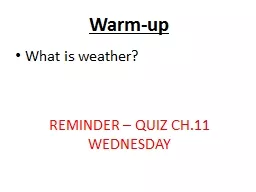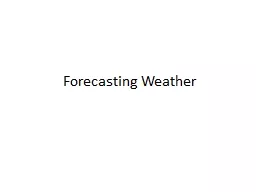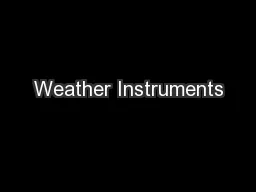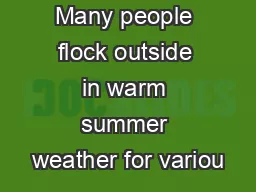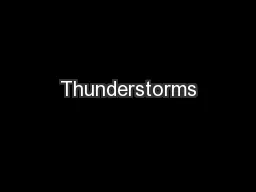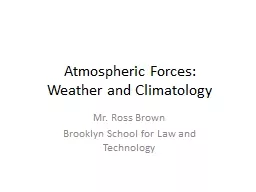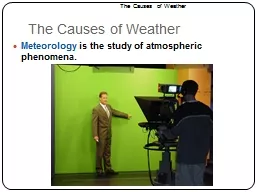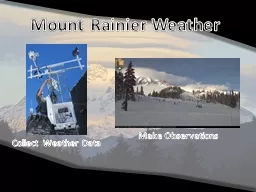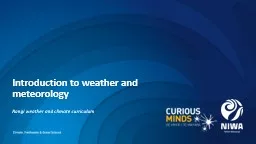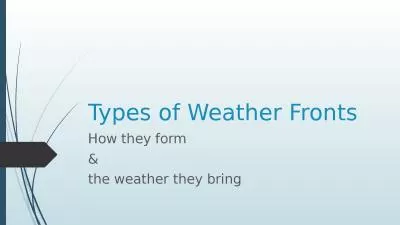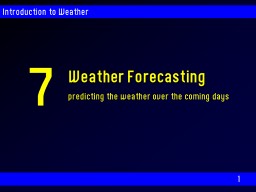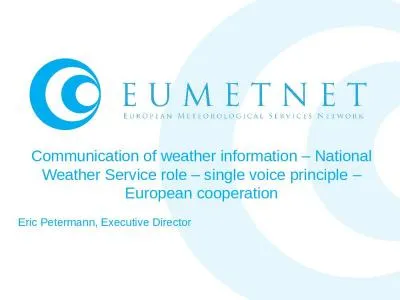PPT-Warm-up What is weather?
Author : jane-oiler | Published Date : 2019-12-05
Warmup What is weather REMINDER QUIZ CH11 WEDNESDAY Chapter 12 Meteorology Causes of Weather Meteorology the study of atmospheric phenomena such as fog clouds
Presentation Embed Code
Download Presentation
Download Presentation The PPT/PDF document "Warm-up What is weather?" is the property of its rightful owner. Permission is granted to download and print the materials on this website for personal, non-commercial use only, and to display it on your personal computer provided you do not modify the materials and that you retain all copyright notices contained in the materials. By downloading content from our website, you accept the terms of this agreement.
Warm-up What is weather?: Transcript
Download Rules Of Document
"Warm-up What is weather?"The content belongs to its owner. You may download and print it for personal use, without modification, and keep all copyright notices. By downloading, you agree to these terms.
Related Documents

